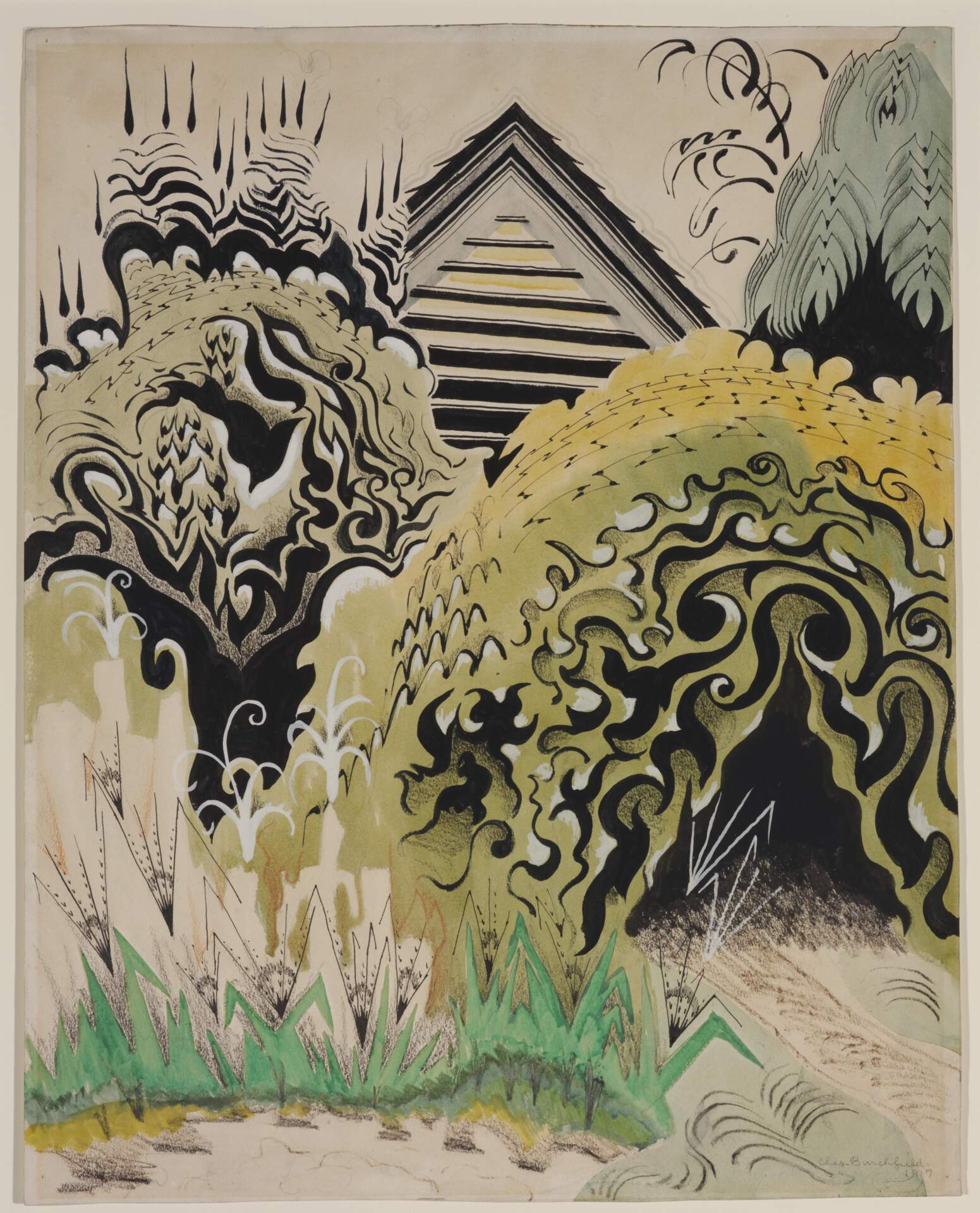Charles E. Burchfield (1893-1967)The Insect Chorus
September 5, 1917
Opaque and transparent watercolor with ink, graphite, and crayon on off-white paper
20 x 15 7/8 inches
Munson Museum of Art, Edward W. Root Bequest, 57.99
In 1917, Burchfield undertook a retrospective look at the powerful feelings he had experienced as a child, particularly standing in a natural setting. His paintings from that year have a bold expressiveness that captures the intensity of these sensations. He inscribed The Insect Chorus:
It is late Sunday afternoon in August, the child stands alone in the garden listening to the metallic sounds of insects, they are all his world, so to his mind all things become saturated with their presence—crickets lurk in depth of the grass, the shadows of the trees conceal fantastic creatures and the boy looks with fear at the black interior of the arbor, not knowing what terrible thing might be there.
The song of insects preoccupied Burchfield throughout his life, and his journal entries are filled with multi-sensory descriptions. His images incorporate the sound-image crossover of his synesthetic perceptions. Around the time he painted The Insect Chorus, Burchfield wrote on September 14, 1917:
noon – z-ing of katydids, high shrill pin-point cricket chorus; darting of yellow and white butterflies – dark blue grey north sky, whitish sepulchral sunlight over things, dry leaves rattle in wind, a cicada; dying sun-flowers; afternoon sunlight turns whiter, color like moon light, the katydids subside, leaving the pinpoint cricket song; searing grass; sad sunlight on windows
